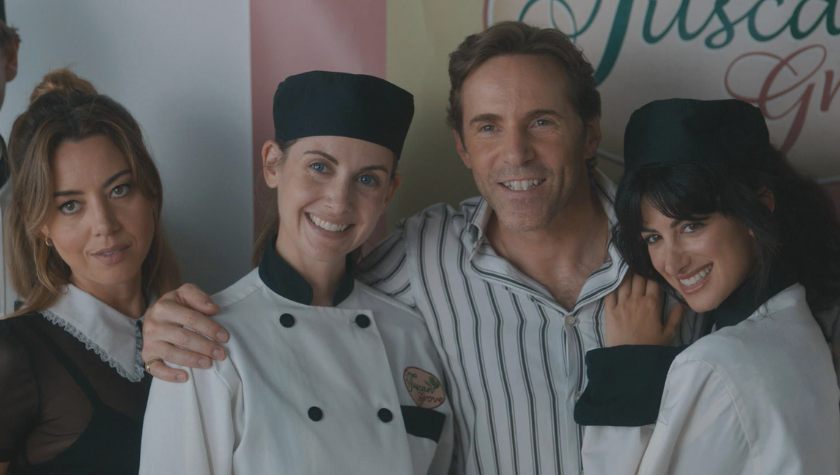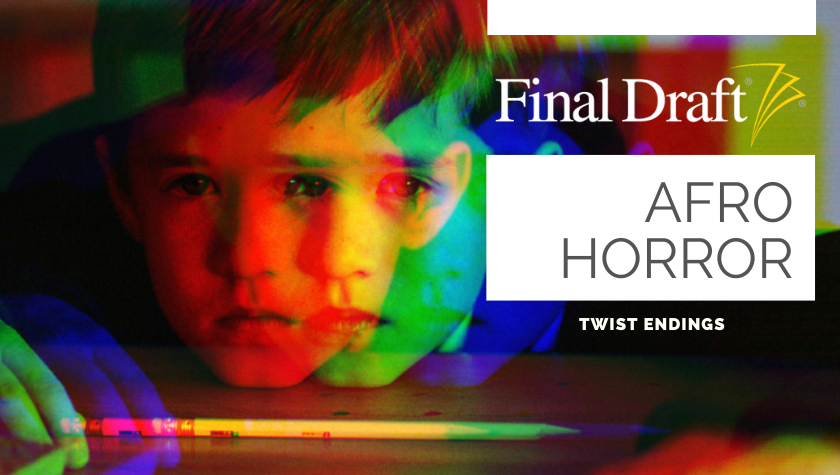Tricks and Lies
December 4, 2015
There are two major types of twist endings in a script. These two types of endings will separate the really good scripts from the really bad ones. The difference in these twists is the difference between trick and a lie.
A twist that utilizes a trick ending is sharp. It builds up to one possible ending, and at the last second, the roof caves in. A twist that utilizes a lie does the same thing! That’s why writers often confuse the two.
But here’s the difference: A trick will lay two sets of tracks. Those tracks run parallel, maybe even intersect from time to time, but the train is only on Track A until the twist hits and it jumps to Track B.
If your twist is a lie, the only track is Track A. Your story cruises along that same track the entire time, and then you, as the writer, derail the train!
In the first scenario, the trick scenario, we have our protagonist, Marty, and the alleged culprit, Sarah. The story jumps between Marty trying to crack the case and Sarah making herself appear more and more guilty to us. Meanwhile, Marty also has another friend, Carol. And while Marty has his suspicious eyes on Sarah, Carol is the one who did it all along! We know Carol. Carol has been with us the entire time. She was right under our noses and we couldn’t catch her!
In the second scenario -- the lie -- we again have Marty and Sarah and Carol. We’ve discovered that Sarah was innocent, and we’ve caught Carol. Carol is super guilty. We’re so sure that Carol is guilty that we’ve even started prosecuting Carol. Carol is the worst. … but actually it wasn’t Carol it was Henry. The End.
That’s what the lie feels like! You’ve probably got a lot of questions in your mind right now. “Who is Henry!?” “Where did this Henry guy come from?” “Why did we waste so much time with Sarah!? Was she even relevant to this story at all!?” Henry may seem like the tricky answer, the ending they never saw coming, but throwing in a last minute Henry just makes your story look ridiculous.
If you’ve now rewritten Henry into your story, you’re one step closer to crafting a great twist, but it’s not that easy. Having Henry hanging around in the background the whole time isn’t enough. Henry has to appear only slightly less guilty than Carol. (Because, face it, Carol is super guilty, we already know that Sarah is innocent, and there’s no way Henry could have done it because it was definitely Carol!)
If Henry is seen in the background of your story at a bowling league with 10 other friends at the time the murder happened and Carol leaves to commit the murder, Henry can’t still be hanging around. Henry appears just as guilty as Carol. You just missed it. (Sarah can stay, though. We know she’s innocent -- bowling was probably her alibi.)
Every good story with a great twist leaves you with clues. There is always something that is going to be there that you completely ignored (idiot). That’s why the twist is so exciting. You had the clues all along, you were given all the information you needed to suspect them, and you didn’t see it. You were tricked! And that feeling of being tricked is what leaves the viewers shocked. It leaves them feeling satisfied despite wasting all that time on Carol.
A lie leaves people confused. It leaves viewers with all those questions you had in your head above. With an abrupt ending following a lie, viewers will be lost, unsatisfied, and maybe even a little angry. But, fear not -- there are some scenarios where your lying twist can be saved.
A lie can be saved with the power of resolution. We might be confused about where Henry came into play in all this. We are angry we wasted so much time on Carol and Sarah. And we’re not even entirely sure who this Henry guy is. What if I told you that Henry was Carol all along! Is that a horribly cliché ending? Yes. But it gets the point across. We don’t know Henry, but suddenly we find out that Henry has been dressing up as Carol and framing her for everything. Henry was responsible for Carol’s convenient lack of alibi because Henry was sure that Carol was alone when he committed the crime as Carol.
In that scenario, we no longer need to know who Henry was, because we know that, all along, Henry was actually our Carol. We got to know Henry through Carol, so when Henry is introduced, we can find out in the resolution that we actually did know him all along.
Really, in a good script, there is no room for lies, only tricks and misdirection. That’s what makes a good twist that can make a solid, satisfying ending to your whirlwind of a story. Confusing a trick with a lie is a quick way to turn your great concept into a below-average story. Give your viewers the clues they need to predict your end, but distract them with an easier option. It will be the great ending you need that they never saw coming.
Written by: Kelly Boruff
Kelly Boruff reads scripts for management and production company Benderspink. She aspires to one day be an extraordinary TV producer, but for now she is just an extraordinary TV viewer. (Like, real TV. You’re welcome, Nielsen.) Like most people just starting out in Hollywood, she has mastered the art of avoiding conversations about career experience and will not indulge your curiosity by listing out her (recently) growing resume. Follow Kelly on Twitter at @KellyBlick.- Topics:
- Industry Interviews & Spotlights




